Metallurgical Research & Technology 2016 Best Paper Award (January 2017)
- Details
- Published on 17 January 2017
Now in free access!
We are delighted to announce the winner of the Metallurgical Research & Technology 2016 Best Paper Award.
The Metallurgical Research & Technology Best Paper Award honors the author(s) of a paper of exceptional merit dealing with research and/or industrial aspects in metallurgy and bringing an outstanding contribution to the field. All articles published during the current year prior to the award, including Short Communications, Regular articles, Reviews and Topical contributions, can be considered for an award. The editorial committee meets every year, in December, to judge the best papers according to the criteria of originality, innovation, significance to the research community, industrial relevance, technical excellence, impact, and clarity of presentation.
The authors of the awarded articles are offered a book from the EDP Sciences catalogue. In addition, they are given the possibility to publish a press release about their work and/or their laboratory/team. Finally, the selected articles are turned into free access so that all readers can have a chance to read them.
First prize winner
Jean-Pierre Birat for his article "Steel cleanliness and environmental metallurgy", published in volume 113, 2016, article 201.
About the article
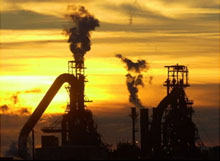
This paper reads like a review but it is actually playing on words, as it deals with non-metallic inclusion cleanliness and environmental cleanliness.
These are usually different topics, related to the purity of metals as constructed in its liquid phase, and to process engineering as it analyses the connection between steelmaking reactors and their environment. Indeed, the paper posits that metallurgy today has become environmental and that it has become essential to always deal with metallurgy and environmental issues at the same.
Steel cleanliness has now reached and asymptotic level of excellence, which will meet the needs of society for a long time to come. Environmental cleanliness, on the other hand, has still a long way to go, even if it meets the standards on emissions imposed today. Indeed, all emissions will have to be reduced drastically in the future, at the same level as greenhouse gas emissions. Environmental issues should drive future major innovation in process engineering, which ought also to improve inclusion cleanliness some more.
About the author

Jean-Pierre Birat is a researcher who has worked on steelmaking, environmental and social issues at IRSID and then at ArcelorMittal Research. He served as secretary general of the Steel Technology Platform, in Brussels. He is now a consultant, with his own firm, IF STEELMAN, on environmental, energy and materials issues. He also teaches, for example in Beijing at USTB. He sits on various international scientific advisory boards and is chairing the scientific committee of the Society & Materials annual conference. He has received several awards, including the Bessemer Gold medal. He has given many papers, conference presentations and keynote lectures.
Second prize winner
Ke Liu, Qisong Sun, Jiaquan Zhang and Chang Wang for their article "A study on quantitative evaluation of soft reduction amount for CC bloom by thermo-mechanical FEM model", volume 113/5, 2016, article 504.
About the article
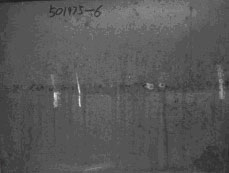
Soft reduction (SR) has been regarded as one of the most promising ways to control center segregation of castings, together with the elimination of shrinkage porosity defects. The SR parameters for better internal quality control, however, have been studied mostly through industry tests in the past several decades. In the present paper, quantitative analysis has been made by sophisticated FEM models for the complex thermal mechanical coupled processes. Based on in-depth understanding to solidification behavior of steels, the model can predict the optimum total soft reduction amount cost effectively for the given steel grade and production formats. Furthermore, the distribution of the soft reduction amount upon the operation region can be suggested reasonably by quantitatively comparing the strain/stress around solidification front.
About the authors
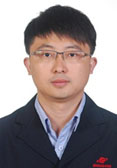
Dr Ke Liu is Assistant Chief Engineer of Continuous Casting Major at the Department of Special Steel.
Shougang Research Institute of Technology in Beijing. He obtained his PhD in Metallurgical Engineering at the University of Science and Technology Beijing in 2012. During 2013-2015, he was Engineer of Continuous Casting Major, Shougang Research Institute of Technology.
The research interests of Dr Ke Liu are in: Metals Processing, Continuous Casting of Steel and Heat and Stress Modeling.
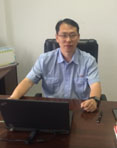
Dr Qisong Sun is Director of Department of Special Steel, Shougang Research Institute of Technology in Beijing from 2014. After obtaining the PhD in Metallurgical Engineering, at the University of Science and Technology Beijing in 2005, he worked as Assistant Chief Engineer of Continuous Casting Major, Shougang Research Institute of Technology in 2012 and as Assistant Director of Department of Special Steel, Shougang Research Institute of Technology in 2013.
The research interests of Dr Qisong Sun are in the: Development of Special Steel Grades, Production and Application of new materials, Metals Processing and in the Continuous Casting of Steel.
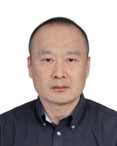
Professor Jiaquan Zhang is Professor and Department Head of Metallurgical Engineering,University of Science and Technology Beijing. He obtained the PhD in Foundry at the Tsinghua University in 1993, was Post-doctor Researcher, University of Science and Technology Beijing and Baoshan Iron & Steel Co., Ltd., in 1993-1996; was Visiting Scientist, Max Planck Institute for Iron Research, Duesseldorf in 1998-2000 and Professor of Metallurgical Engineering at the University of Science and Technology Beijing since 2001.
Research Interests: Fundamentals of Solidification, Metals Processing, Continuous Casting of Steel, Fluid Flow Modeling and Heat and Stress Modeling.
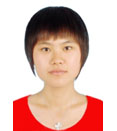
Mrs. Chang Wang is Engineer of Steelmaking Major at the Shougang Research Institute of Technology since 2013. She has obtained a Master, in Metallurgical Engineering at the University of Science and Technology Beijing in 2010.
Research Interests: Metals Processing, Continuous Casting of Steel and Hot Rolling Process.
Third prize winner
Kuan Xu and Ming-hua Bai for their article "DEM simulation of particle descending velocity distribution in the reduction shaft furnace", volume 113/6, 2016, article 603.
About the article

In this work,we have investigate the effect of the gas flow in the shaft furnace, the height, the diameter and the bosh angle of the shaft furnace on the velocity distribution during discharging process and analyzed based on the granular dynamic theory and Janssen theory. Results indicate that the effect of the gas flow on the velocity distribution is insignificant. In order to obtain a uniform velocity distribution, it is better to increase the shaft furnace height, or the shaft furnace diameter, or to decrease the shaft furnace bosh angle. An optimization model is proposed for the uniform velocity distribution at last. The velocity distribution in the optimization model is more reasonable for discharging materials evenly.
About the authors
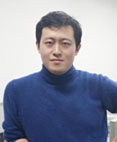
Kuan Xu: He is a doctoral candidate in National Engineering Research Center for Equipment and Technology of Cold Strip Rolling in Yanshan University. The aim of his doctoral thesis contributes to understanding of the gas-solid two phase flow in the reduction shaft furnace.
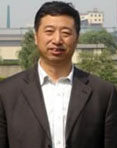
Ming-hua Bai is a Professor and doctoral supervisor in National Engineering Research Center for Equipment and Technology of Cold Strip Rolling in Yanshan University. His main research topics are the structural analysis of smelting equipment and modern design. He has worked for 41 years in smelting equipment. He has contributed to 3 books on smelting equipment. He holds 11 patents.


